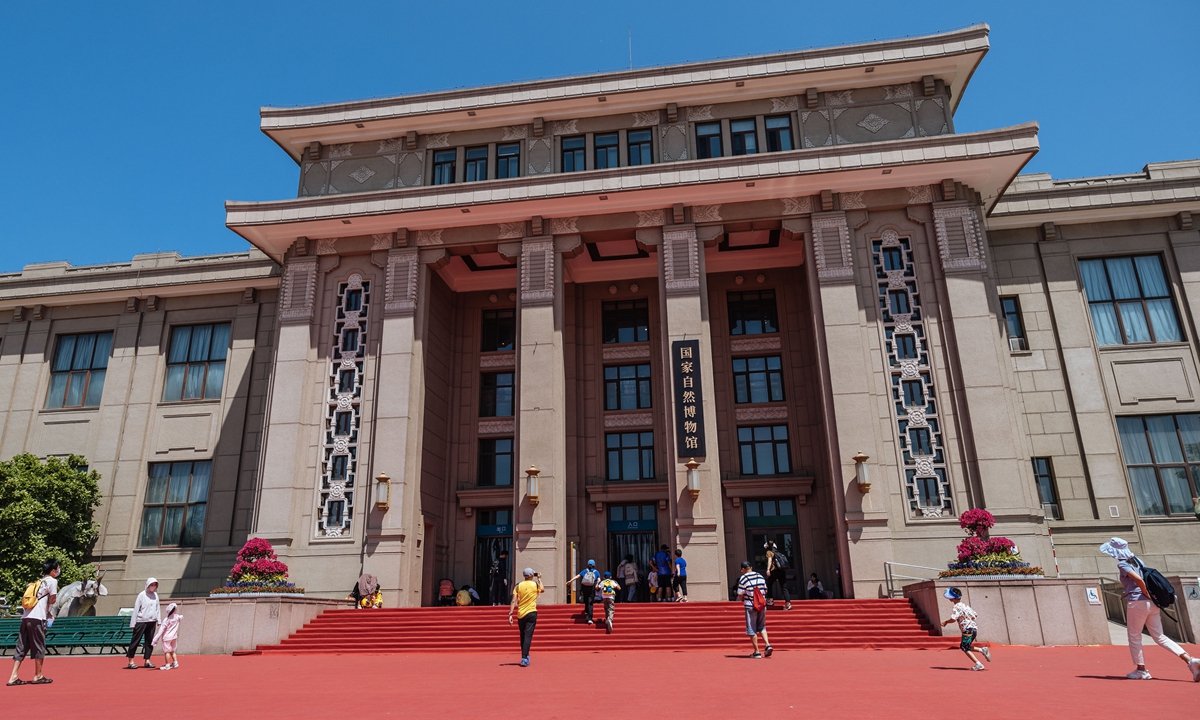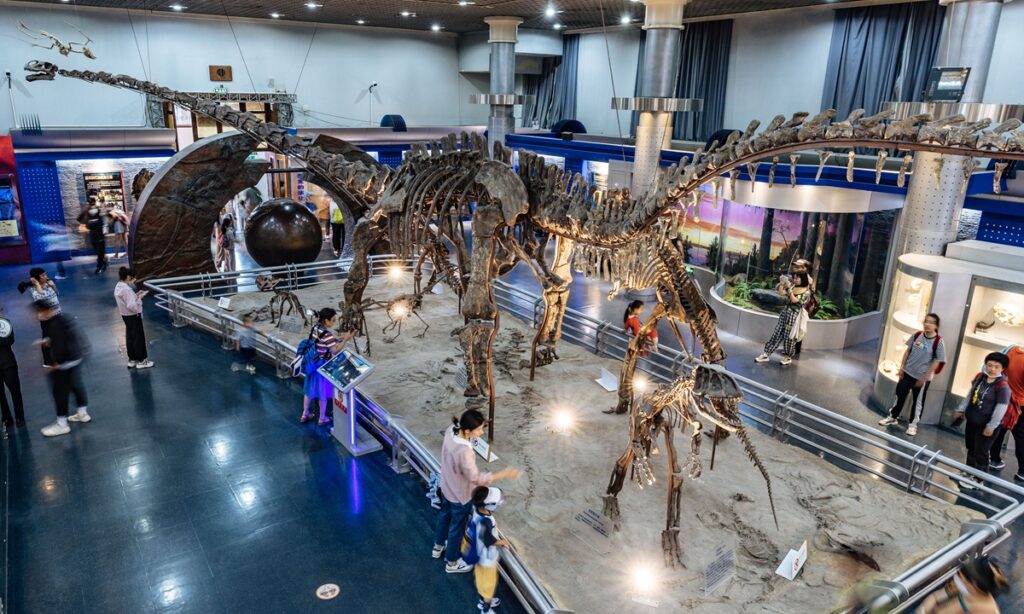Expanded mission
In early June, the Beijing Museum of Natural History was upgraded from a city-level to a national-level museum. Now known as the National Natural History Museum of China (NNHMC), the institution, covering a 230,000-square-meter hall, will display and introduce the country’s prolific natural history resources. Along with the name change, the museum is also expanding its mission and responsibilities into new areas.
Historical site, new direction
The NNHMC is China’s only national-level public institution dedicated to natural history. It was first founded in 1951 by the preparation department of the National Central Museum of Natural History, and was renamed to the Beijing Museum of Natural History in 1962.
Meng Qingjin, the director of the museum, told the Global Times that the upgraded institution has the potential to become a new “cultural landmark along the south section of Beijing’s Central Axis.”
The current museum houses over 370,000 treasures that depict China’s zoology, paleontology, marine life, Chinese medicinal herbs and so forth. With its high-level scientific research and expanding exhibition space, the museum is at the forefront of natural history in China. The institution is also categorized as a National Youth Science and Technology Education Base.
A natural museum is like a “condensed container of time and space,” Meng told the Global Times, emphasizing that a natural history museum is “where the prosperity of nature” and “the long history of biological evolution” are rooted.

The National Natural History Museum of China Photo: Li Hao/Global Times
With its 70 years of history, the NNHMC was upgraded from the Beijing Museum of Natural History with a clear new goal in mind to assist with China’s ecological civilization.
Meng told the Global Times that the new museum was established based on the hopes of several generations of Chinese natural history experts. In coping with global issues such as environmental pollution and ecosystem degradation, distinctive natural history museums have already been built in many different countries such as the UK, the US and France. “China needs a new one too,” Meng emphasized.
“A natural history museum in the new era should not only disseminate knowledge about natural science to people, but more importantly, guide people to understand the concept of ecological civilization and nature, to respect nature and to protect nature,” he said.
The director is not the only expert who has called for such a recent change.
Dating back to 2006, 26 Chinese academicians wrote a letter to China’s State Council recommending the construction of a national-level natural history museum.
The proposal was gradually developed from 2008 to 2015. In 2019 a milestone was reached when Cai Qi, the then secretary of the CPC Beijing Municipal Committee, gave several instructions that facilitated the plans to upgrade the museum.
“The museum’s name change signals a major shift in its mission orientation,” Meng said, adding that the NNHMC’s future development will focus on enhancing research, expanding its collection and improving current public services.

The National Natural History Museum of China Photo: Li Hao/Global Times
‘Smart museum’
The museum’s 70 years of connecting with people will not be erased by the new title and forward-thinking plans.
For many individuals, the museum was more of a “playground” than a museum as it was the place where they first began to learn about science as children. It helped plant the seed of science and technology in people’s hearts.
A Beijing resident surnamed Fan, who was born in the 1960s, told the Global Times that he still vividly remembers the moment when he first visited the museum at the age of 10. The massive dinosaur skeletons, bird specimens and plant fossils left a lasting deep impression on him that he carried throughout his life.
Fan mentioned that he was particularly fascinated by the colors of the dinosaurs and won-dered how scientists had determined them. He checked some references after class, and found that scientists speculated about their colors through intensive research based on ex-isting animals. This discovery sparked his growing interest in biology.
Such inspiration has continued through the generations, as Fan brought his child to visit the museum 30 years after his own first visit.
“The museum is kid’s first class experience in nature and science,” Fan said.
“I am glad that this museum has been upgraded to the national level. It can provide our fu-ture generations with opportunities to learn and love science, which will be significant for our country’s development,” Fan said.
As education is one of the museum’s missions, it is more important than ever that it seeks out creative means to engage young people.
The museum’s official website has a specially designed “cultural and creative” channel that promotes intriguing natural history-related side goods such as mugs and stationery, envi-ronmental handicrafts and popular science magazines. Zhang Liming, a museum expert, told the Global Times that these creative goods have already become a “necessity” for mu-seums to attract young visitors.
With a virtual exhibition hall also on the website, the museum is gearing up to embrace a new digital makeover in the future by strengthening “the use of 5G and artificial intelligence,” while improving “visitor-centered information technology services.”
“These are all for constructing a smart museum that is in step with the development of a smart country,” Zhang noted.
In the future, the “smart museum” will also promote cultural exchanges like “international academic conferences and exchange activities,” Meng revealed to the Global Times.
“The natural museum will open its door and share its resources to its maximum in the new era, and integrate itself with science, history, culture and art,” the director said.
(Global Times)




